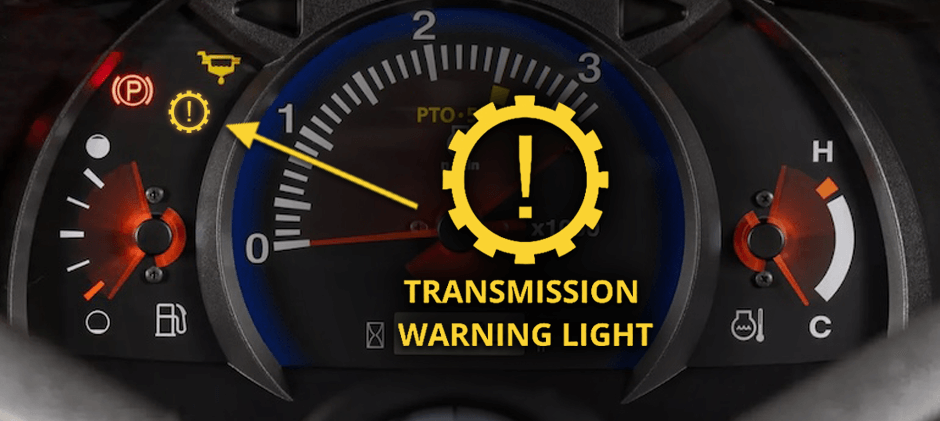If you operate loaders, backhoes, or forklifts day after day, you’ve probably noticed how sensitive these machines are to heat. When the transmission runs too hot, everything else starts to suffer — performance drops, gears slip, and expensive downtime follows. This article will help you understand exactly what a normal transmission temperature is, why overheating happens, and what you can do to prevent it.
What Is the Normal Transmission Temperature?
In off‑road machinery, the transmission system links the engine to the driveline through hydraulic flow and gear sets. Much like an engine, it operates within a safe temperature band — not too cold to thicken the transmission fluid, and not too hot to thin and degrade it.
- Normal Working Range: 175°F–225°F (80°C–107°C)
- Caution Zone: 225°F–240°F (107°C–115°C) — expect performance issues and fluid oxidation
- Danger Zone: Above 250°F (121°C) — seals, friction plates, and valves may begin to fail
While on-road trucks may tolerate brief peaks of 230°F, heavy off‑road equipment faces more stress from low-speed operation, constant torque loads, and dust-laden environments. These machines rely heavily on fluid cooling circuits and external coolers to stay within the safe zone.
Why Does a Transmission Overheat?
Transmission overheating doesn’t happen at once. It’s a progressive failure — the internal oil film loses viscosity, friction increases, and metal surfaces begin to fatigue.
Here are the key factors behind rising transmission temperature in off-road applications:
1. Torque Converter Load
The torque converter is the primary heat generator in an automatic or power‑shift transmission. When operating under high torque — like climbing with a full bucket or pushing soil uphill — constant fluid shearing occurs inside the converter. That energy quickly turns into heat.
2. Poor Fluid Circulation
A failing transmission pump or clogged oil screen limits cooling oil flow through the converter and clutch packs. Restricted flow means the oil cannot carry heat away efficiently.
3. Inadequate Cooling System
Many older or heavily used machines have oil coolers partially blocked by dust or mud. Others simply operate beyond their cooler capacity. Installing an auxiliary transmission cooler, like the plate‑fin design used in aftermarket units, can significantly drop temperatures by up to 20°F–30°F.
4. Load and Speed Cycles
Frequent gear changes, long idle periods, and creeping speeds all strain the transmission. These duty cycles cause continuous fluid agitation without sufficient airflow to remove heat.
5. Contaminated or Degraded Fluid
Overused transmission oil oxidizes and loses its friction modifiers. At high temperature, varnish builds up on valve bodies and clutches — a sure recipe for sticky shifts and slipping torque transfer.

Common Signs of an Overheated Transmission
Recognizing symptoms early can save thousands in repairs. Typical indicators include:
- Transmission Warning Light: A gear icon with “!” appears when the system detects overheating or pressure loss — stop operation and check temperature and fluid level immediately.
- Burnt Smell or Darkened Oil – Oxidized fluid gives off a sharp odor.
- Delayed or Harsh Shifts – Hydraulic pressure changes as fluid thins out.
- Dashboard Warnings – Temperature sensors trigger alerts when overheating persists.Transmission Warning Light
- Reduced Power or Slippage – Torque converter clutch slipping reduces drive power.
- Fluid Overflow – Boiling oil may vent through breather tubes.
Is It Safe to Drive with an Overheated Transmission?
Operating a machine while the transmission is overheated is never safe. Severe heat reduces oil film strength, leading to increased wear on clutches and valves. Continuing to run under these conditions can permanently damage hard components such as the torque converter or planetary gear set.
If your temperature gauge passes 240°F:
- Stop immediately and idle the engine in neutral.
- Check cooler fins and fluid level.
- Avoid power‑braking or high‑load maneuvers until temperatures normalize.
Persistent overheating is a sign of mechanical issues — possibly pump wear, cooler blockage, or low fluid circulation.
How to Prevent Transmission Overheating?
1. Add an Auxiliary Transmission Cooler
Installing a high‑capacity cooler helps dissipate heat more efficiently. Plate‑fin designs used in off‑road applications can drop oil temperatures by up to 30°F. Positioning the cooler in strong ambient airflow ensures optimal performance.
2. Maintain Torque Converter and Pump Efficiency
Since most heat originates here, preventive replacement is key. For OEM-quality components, consider the torque converter and transmission pump collections at FridayParts — engineered specifically for heavy-duty loaders, backhoes, and forklifts.
3. Regular Transmission Fluid Checks
Inspect fluid levels frequently — about every 200–300 operation hours. Look for brightness, clarity, and the correct level.
Replace immediately if:
- Color turns dark brown
- There’s a burnt odor
- You see signs of contamination (milky or foamy oil)
4. Clean Cooling Components
Regularly clean radiators, oil cooler fins, and hydraulic lines. Even a thin film of dirt or mud can raise oil temperature by 15% or more.
5. Service on Schedule
Follow your manufacturer’s maintenance intervals — typically every 500–700 hours — including oil, filter, and gasket replacement. Always use the specified fluid type.
Conclusion
Keeping the transmission temperature under the range of 175°F to 225°F means that the shifting can be smoother, the torque can be more reliable, and the life of each component can be much longer. Through controlling the load properly, paying attention to the transmission warning light, doing the maintenance regularly, and making sure the torque converter and transmission pump are always in good condition, you are able to avoid the expensive stoppage of work and make your machine serve for many years.
